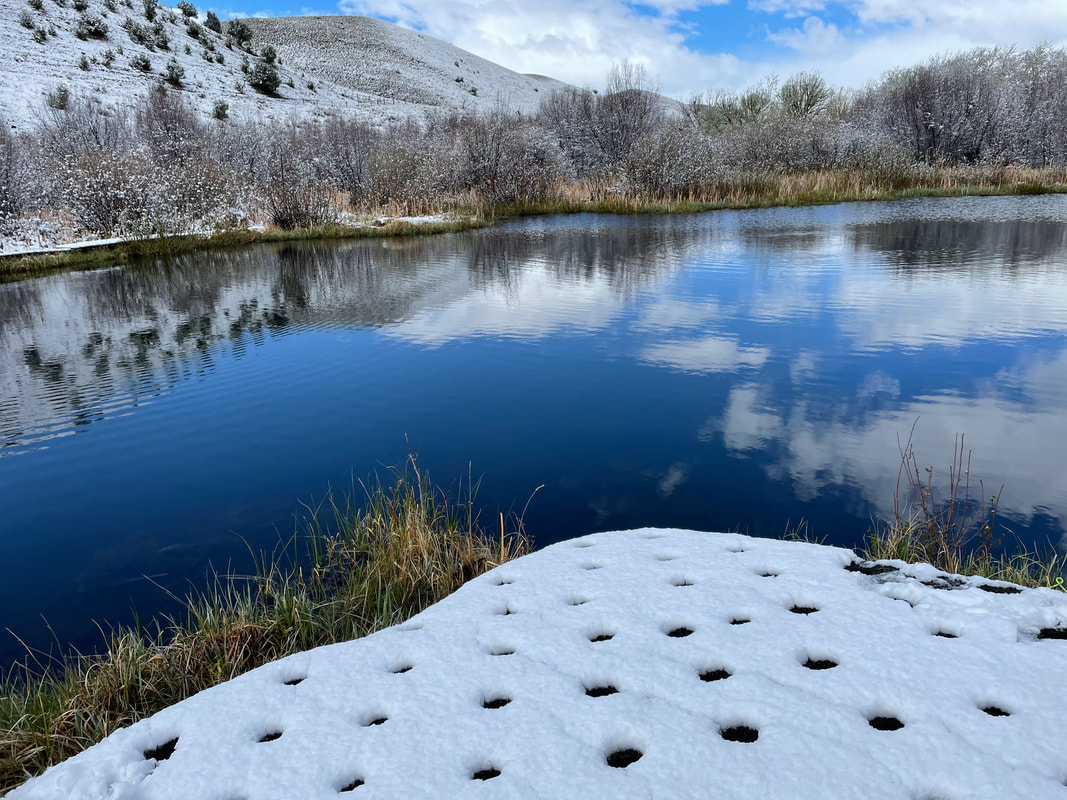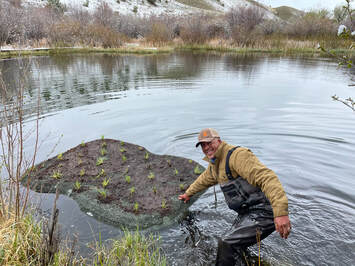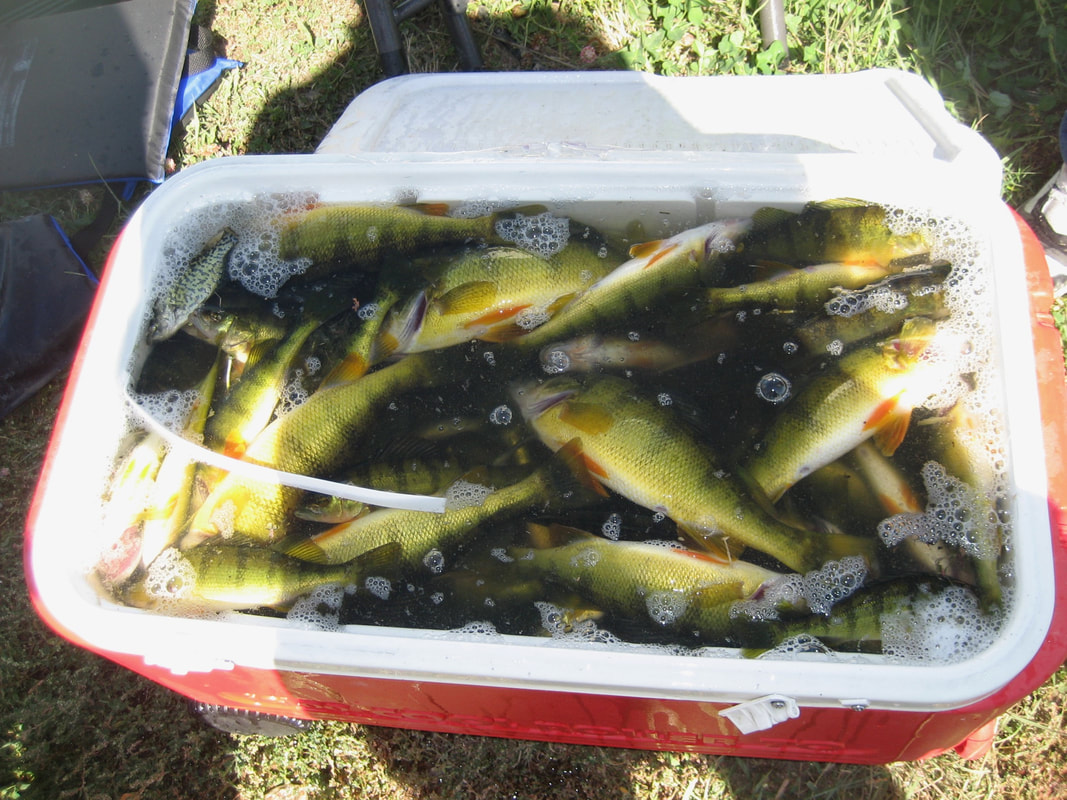A Step Towards Paradise... How Do We Build On Nature's Model and Create Beauty and Abundance?5/13/2021 Manmade nutrients are being unleashed against water at pandemic volumes. We have no choice but to fix this, unless we are prepared to dig our own graves. The benefits outweigh the costs.
Nature’s model has transitioned into practical water stewardship. We know how to steward for healthy, beautiful fish and other appropriate biota, instead of monocultures of blue-green algae and cyanobacteria, or ultimately red tide. We have the science, and we have a growing number of stewardship masters, we call them Island Masters, who today launch BioHavens in every kind of water imaginable, from marine settings off the coast of southeast Alaska to phosphorus poisoned waters down watershed from Piney Point off the west coast of Florida. Closer to home, here at Shepherd in Eastern Montana, on Fish Fry Lake, we’ve learned that hyper eutrophic water that’s been nutrient enriched by agriculture and urbanity, can be transitioned to health. Water clarity is one simple marker of this process. We can go from 14-inches, to nineteen feet, and allow sunlight, one of two primary engines of life to occur at depth. We can design for optimization of autotrophic life, plants that require sunlight, as well as heterotrophs, that require surface area, to flourish and advance in their staircase trudge towards comprehensive utilization of every nutrient. We can energize food webs, so that the water that leaves our systems is pure. The water is clear, pristine, and allowed again to function as the lubricant of life. Methane is the Unnatural AlternativeToday we know that manmade nutrients are being unleashed against water on nothing more than a happenstance basis, but at pandemic volumes. Farmers have been prodded towards artificial productivity, non-sustainable productivity, at the terrific expense of both watershed and environmental health. And today, now, we know how to fix this. We also know that we have no choice, unless we are prepared to dig our own graves. Methane happens when we humans grossly mismanage water. When water is stripped of oxygen, methane results. The water and its associated food web is impaired, and sick. Nutrients stack up, and build on a downward spiral. Life, other than anaerobic bacteria, is disallowed. And climate change is even further advanced, as methane, after time-in-atmosphere correction, has some 25 times more impact than CO2. When water is mismanaged, it generates methane instead of carbon dioxide. After time correction, methane has 25 times the impact of CO2 in our atmosphere. I repeat this number for emphasis. New and more comprehensive studies track what this really means for human sustainability (DelSontro and Beaulieu). And the terrific irony is that we also have the data set required to turn this nutrient impairment factor into super abundance. Fish Fry Lake here at our research center in Shepherd, exemplifies our potential. Imagine 17” black crappie, or largemouth bass that weigh upwards of nine pounds, here in the north, in Montana. Or northern yellow perch pushing two pounds, or bluegill and green sunfish, the fillets of which nudge the edges of a standard size cast iron skillet. We know how to grow fish instead of algae. We know how to collaborate with nature’s model. We have the tools, and if we can sustain against conventional inertia, the pop-a-pill thinking that has led us to this current precipice, we can achieve a new level of quality of life. Humans vector with edge habitat. We occur around water. Some ninety percent of humans live within range of coastal or edge water. We vector with water, it’s really that simple. And to keep water healthy we must employ nature’s model…surface area and circulation sustain nature’s food web. When this combination happens in sufficient abundance, aerobic microbial life is sustained. It rewards us with abundance. In the presence of concentrated nutrients, it rewards us with super abundance.
We live here, and fortunately, in most settings, operate near the top of the food web. Otherwise we’d spend a lot more time looking over our shoulders! Here’s the bottom line…we must maintain aerobic conditions top to bottom in our freshwater settings. When we do this in the presence of ample surface area, we are rewarded with super abundance. When we don’t do this, we experience an anaerobic nightmare of decline. Methane happens when thoughtful stewardship doesn’t. It’s that simple. After writing these thoughts, I learned that a paper was published on May 11th, 2021 by a team of scientists who’ve measured the global benefits of protecting local water quality. It’s important reading for anyone who thinks we can’t afford water quality – or who is prepared to invest in water quality as a business strategy. AuthorBruce Kania is the CEO of Floating Island International and a passionate advocate for biomimicry, clean water and abundance of life - and an avid fisher person.
0 Comments
Leave a Reply. |
AuthorWrite something about yourself. No need to be fancy, just an overview. Archives
August 2023
Categories
All
|



 RSS Feed
RSS Feed